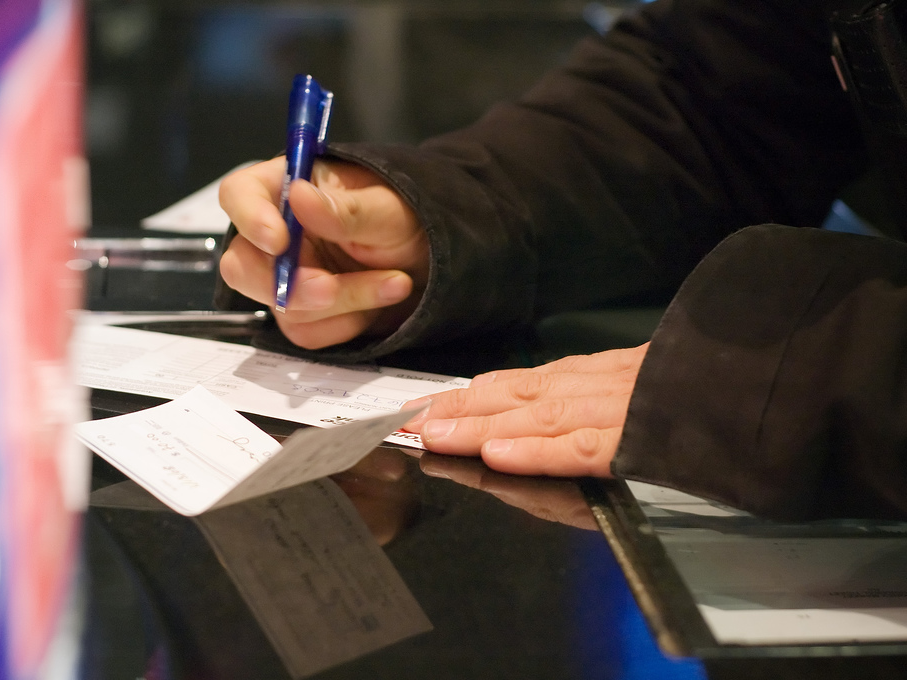- It’s important to know how to write a check, even as we rely more and more on digital payments.
- If a check is not correctly filled out, it cannot be deposited.
- Here’s how to write a check in six simple steps.
Online banking makes tracking expenses and checking bank accounts exponentially easier than carrying around a checkbook. So much so that writing a check isn’t even a passing thought for some people as they’re paying a bill or buying something at the store. In fact, one-fifth of millennials have never even written a check, according to First Data.
But despite popular belief, checks aren’t dying. “Our customers wrote almost a billion checks [in 2016]. Checks will be around for a while,” Michelle Moore, Bank of America’s head of digital banking, told Bloomberg.
Writing and depositing checks is still an important part of daily life, whether your old-school landlord prefers rent paid that way, or your grandma sends you one for every birthday.
When writing a check, each section has to be accurately filled out or the check won’t be cashed. Here’s a step-by-step guide on how to write a check.

When you're filling out a check
1. Write the name of the individual or company the check is for one the "Pay to the order of" line.
2. Insert today's date in month/date/year (US).
3. Clearly write the payment amount in numbers.
4. Write the payment amount in words. If the amount includes cents, you can write it in words or show it as a fraction. For example: 10 cents would be written as 10/100 because it is 10 cents out of 100 cents (meaning a dollar). It's good practice to draw a line after the last written word, if you have space left over, so no additional numbers can be inserted after the fact.
5. Next to "Memo" write out the purpose of the check, i.e. "rent" or "birthday."
6. Sign the front of the check.
When you're depositing a check
1. Sign the back of the check before you deposit it - the bank may not accept the check if it's not endorsed by the recipient.
